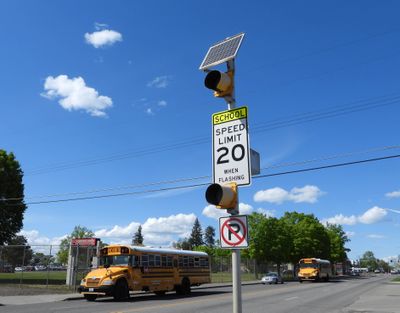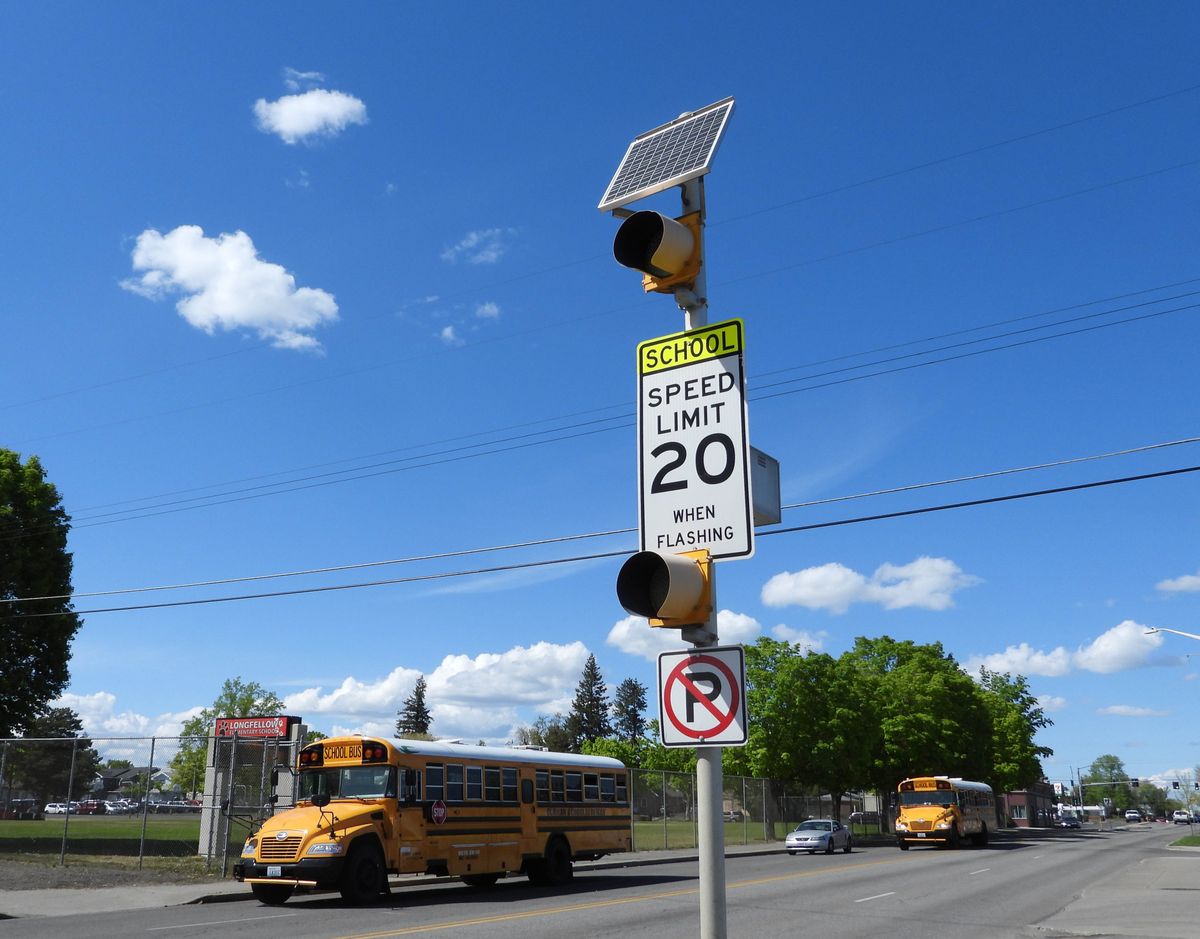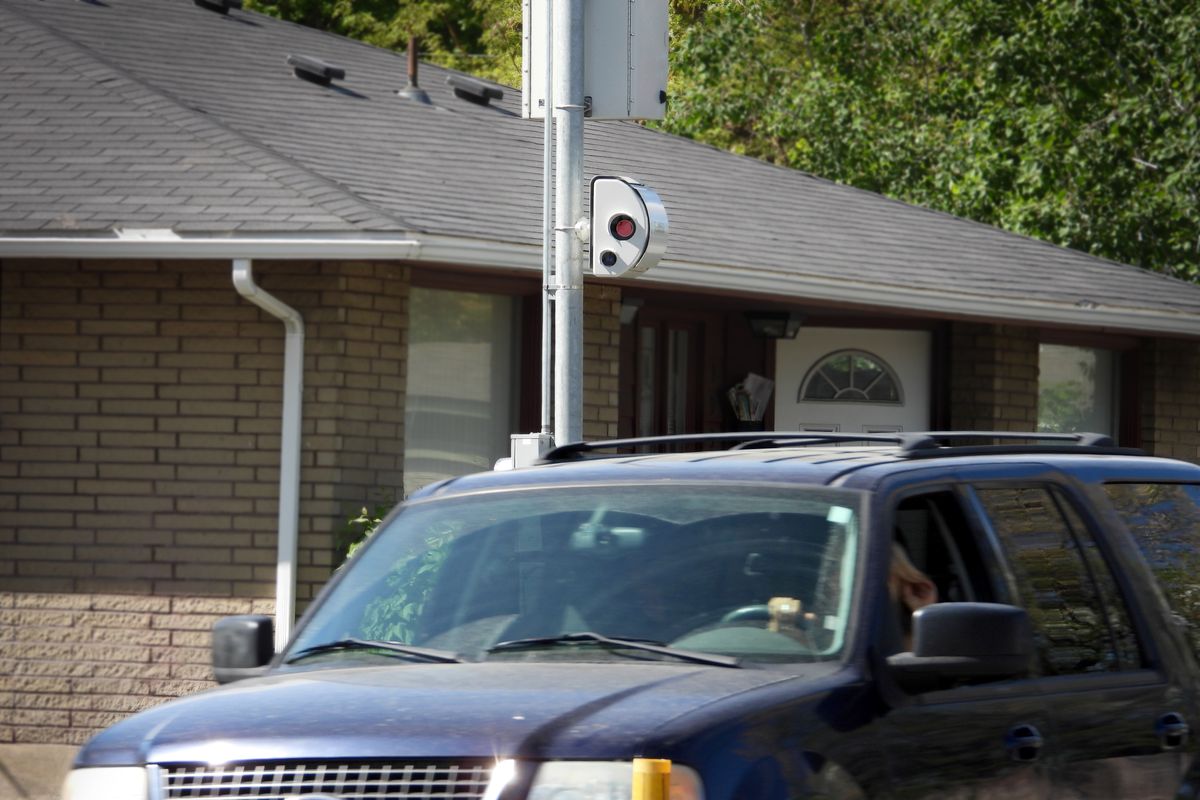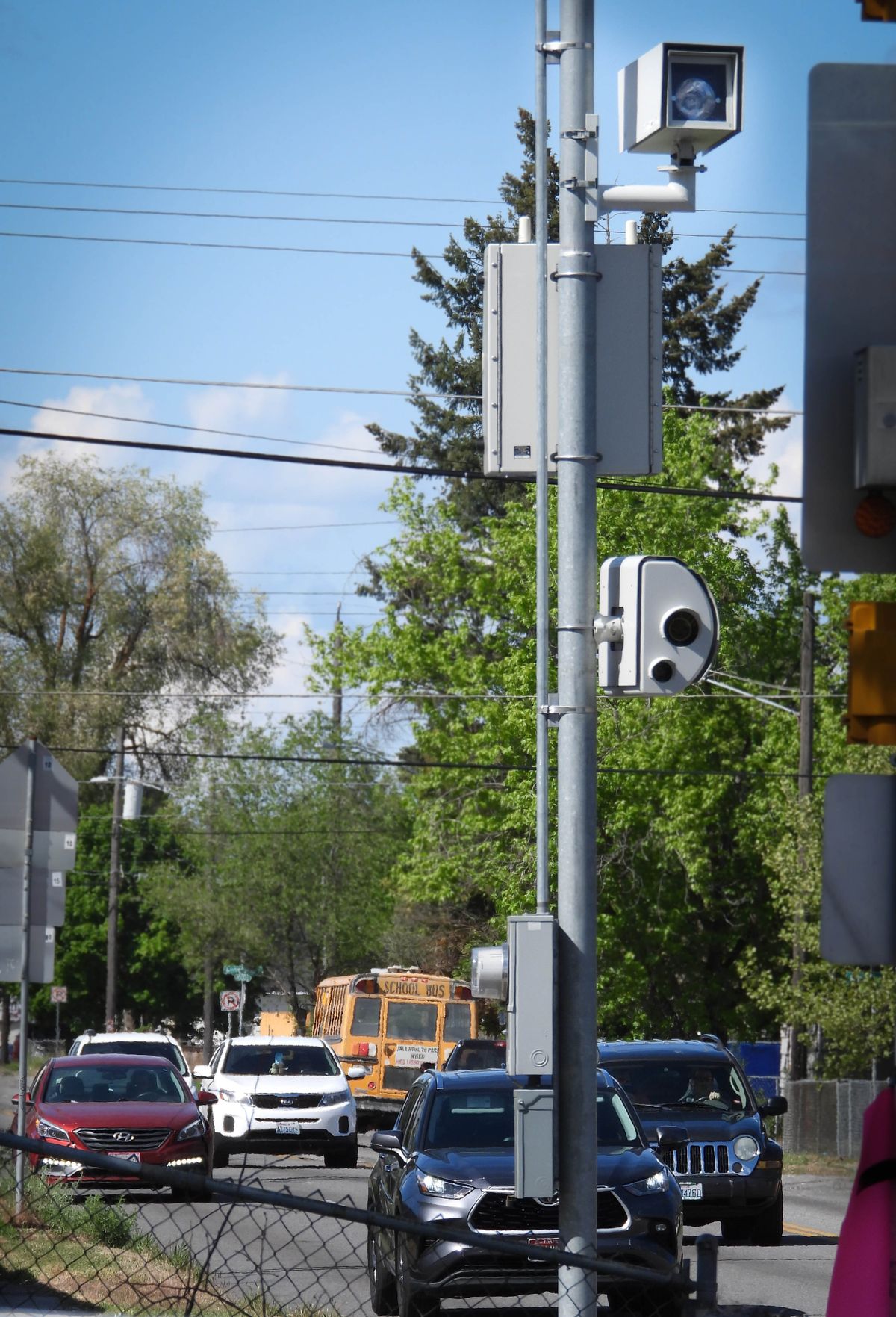Supreme Court considers challenge to speed cameras in Spokane school zone

OLYMPIA – A Spokane motorist should have the right to a trial over a speeding ticket he received in 2016 from an automated traffic camera in a school zone that he contends wasn’t properly set up, the Washington Supreme Court was told Thursday.
An attorney for Chris Williams argued the civil suit was incorrectly dismissed without a trial after the city and the company that operates the system, American Traffic Solutions, Inc., challenged his ability to seek the claim in the state Court of Appeals.
If the high court rules in Williams’ favor, a trial in Spokane County Superior Court could determine if the city of Spokane improperly set up a traffic camera in the school zone six years ago and tell the city “you need to stop doing this or you need to correct it,” Sarah Harmon, Williams’ attorney, told the Supreme Court.
The camera portion of a speed camera system hangs on a post next to North Nevada Street, a block north of Longfellow Elementary School, shown Thursday, May 13, 2021. The camera enforcement system was placed there to slow cars when students are coming and going from Longfellow. (Jesse Tinsley/The Spokesman-Review)Buy a print of this photo
If the suit is successful, the city could be ordered to repay thousands of motorists who were improperly ticketed if the trial determines it had engaged in “unjust enrichment,” Williams’ appeal says.
But on Thursday, an attorney for American Traffic argued the appeals court correctly dismissed the case when it ruled Williams doesn’t have standing to sue over the potential of future harm by driving through the school zone. He didn’t follow the proper procedures, Vanessa Power said, and shouldn’t be allowed to sue even though he says he routinely drives through the area.
If he doesn’t exceed the speed limit, “he’s not at risk of any violation,” she said.
Although Williams received his ticket in 2016 from the automated system for going 28 mph on Nevada Street, he contends the problem actually goes back to 2008, when the city placed a flashing speed limit sign warning of the school zone in the area.
That sign is 385 feet from a marked crosswalk for the school at Nevada Street and Empire Avenue but state law says school zones only extend to 300 feet away, Williams argued in his lawsuit. The automated traffic camera was set up outside that 300-foot zone in 2015 and began issuing tickets for driving faster than 20 mph in a school zone.
Williams contends he was ticketed for driving 28 mph in the area of the school zone outside the 300-foot limit. That’s too fast for a school zone and he paid a $234 fine in Municipal Court. But it was within the 30 mph limit that he argues should have been in effect on the street outside the 300-foot school zone.
When he filed suit against the city in 2018, he contended that thousands of people may have been improperly ticketed for similar violations when they were outside the 300-foot limit of the school zone. He argued the city didn’t follow the rules for setting up a proper school zone when installing flashing lights in 2008, and should have corrected it before setting up the traffic camera in 2015.
The city asked the Superior Court to dismiss the suit shortly after it was filed. When that motion was rejected, the city and American Traffic went to the Court of Appeals, which eventually ruled that under past case law, Williams didn’t have legal standing to bring his lawsuit. He asked the Supreme Court to reverse that decision and send the case back to the trial court.
Whether the city properly set up the school zone along Nevada isn’t something the Supreme Court is being asked to decide. Rather, the justices are considering whether the appeals court had the discretion to consider whether Williams had standing to file the suit, something that wasn’t part of the motion the city and American Traffic filed asking the trial court to dismiss it.
If a majority of the court agrees with Williams, it could go back to Superior Court for a trial in which city officials would be asked to testify about what procedures they followed in setting up the school zone. It might also be expanded to a class action suit that could include other drivers who got tickets in that part of the Longfellow school zone.
The Supreme Court typically takes several months to consider a case before issuing a ruling.




